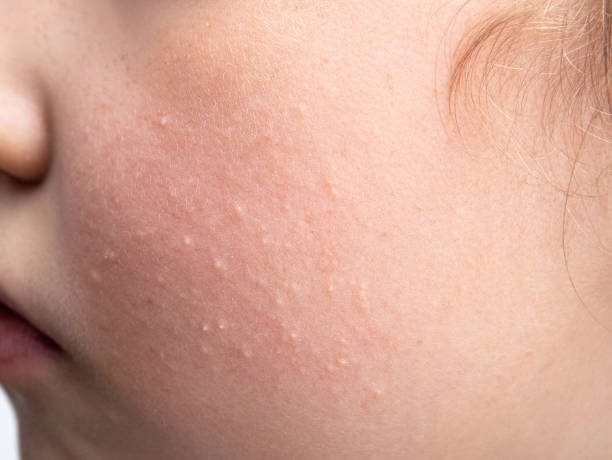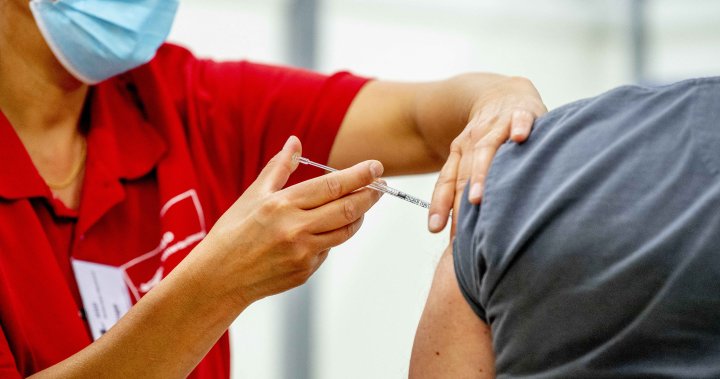The phrase “milia” is becoming more commonplace in the realm of skincare, and it is catching the interest of those who are looking for clean, beautiful skin. But what precisely are milia, and why are they creating such a commotion in the cosmetics sector? In this all-encompassing guide, we will dig into the realm of milia, investigating their origins as well as the many treatment and preventative measures available for them. By the time you finish reading this article, you will not only have an in-depth comprehension of milia, but you will also be equipped with the information necessary to properly combat them and reclaim the natural shine of your skin.
Table of Contents
Understanding Milia
Milia are superficial cysts that are mostly harmless and may be found anywhere on the skin. Milia are so similar in appearance to whiteheads that they are sometimes confused for whiteheads. However, unlike whiteheads, milia are not caused by blocked pores or an overproduction of oil in the skin. Instead, they are caused when dead skin cells get stuck under the surface of the skin, resulting in the formation of little lumps that resemble pearls. Milia may appear anywhere on the face, including the cheeks, forehead, nose, and chin. Sometimes they even appear on the scalp. Milia are normally harmless, but they may be a source of annoyance for those who are working towards the goal of attaining perfect skin.
Causes of Milia
It is vital to have a solid understanding of the factors that contribute to milia in order to successfully treat the condition. The following is a list of some of the more prevalent variables that contribute to the development of milia:
- Exposure to the Sun for an Excessive Amount of Time Prolonged exposure to the sun may cause damage to the skin and contribute to the development of milia. UV rays have the potential to thicken the skin’s outermost layer, making it more difficult for dead skin cells to be shed in a normal manner.
- Products for the Skincare Routine That Are Too Heavy The use of products for the skincare routine that are too heavy or that include oil may trap dead skin cells, producing an environment that is perfect for the formation of milia. It is essential to choose non-comedogenic products that will not cause your pores to get clogged.

- Miliaria may be caused by injuries to the skin, such as burns, blisters, or rashes. Miliaria can also be caused by trauma to the skin. In situations like these, the normal healing process of the skin may result in cysts growing underneath the surface of the skin.
- The natural exfoliation process of our skin might slow down as we get older, which can result in the buildup of dead skin cells and an increased risk of milia.
Treating Milia
Let’s investigate some viable therapy alternatives now that we have a better understanding of what causes milia, shall we?
- Seek the Advice of a Dermatologist: If your milia are chronic or causing you discomfort, it is in your best interest to seek the advice of a dermatologist. In order to eliminate the cysts, a dermatologist may conduct extractions that are both safe and effective.
- Retinoid creams, such as tretinoin, may assist accelerate the skin’s natural exfoliation process, therefore decreasing the accumulation of dead skin cells and lessening the appearance of milia.
- Chemical Peels Chemical peels are a kind of exfoliation that work by stimulating the shedding of dead skin cells by exfoliating the top layer of the skin. When carried out by an experienced medical expert, this treatment for milia has the potential to be quite beneficial.
- Microdermabrasion is a non-invasive process that involves the use of a machine to exfoliate the skin’s outer layer. This procedure may assist in the removal of milia and enhance the skin’s texture.
Preventing Milia
When it comes to milia, prevention is almost always the most effective form of treatment. The following are some suggestions that can assist you in preventing the development of these:
- Exfoliation Without Harm Regular, gentle exfoliation is one of the best ways to keep dead skin cells from building up on the surface of the skin. To encourage a healthy turnover of skin cells, try using a gentle exfoliating scrub or a gentle brush.
- Choose Products that Do Not Contain Comedogenic Ingredients You should choose cosmetics and skincare products that do not contain comedogenic ingredients. It is less probable that these items may cause your pores to get clogged and lead to the development of milia.
- Protection from the Sun Always apply a sunscreen with a high SPF to protect your skin from the sun’s potentially damaging ultraviolet radiation. This may assist in the maintenance of healthy skin and lower the likelihood of developing milia.
- Scrubbing too roughly should be avoided, and your skincare regimen should be performed with care. Scrubbing too vigorously may be irritating to the skin and may even cause milia to grow, so try to limit how much you do it.

Miliaria are a skin condition that affect many people, but with the appropriate information and strategy, they may be successfully controlled and avoided. In conclusion, milia are a widespread skincare problem. Taking action is essential to getting the clean, bright skin you want. This is true regardless of whether you decide to seek the advice of a dermatologist or include preventative measures into your existing skincare regimen. If you educate yourself on what causes milia, what treatments are available for it, and how to avoid getting it in the first place, you’ll be well on your way to having skin that is not only attractive but also healthy.
Visit The Insider’s Views if you would want to read further information on how to increase the amount of traffic that visits your website.
Advanced Treatment Options
More sophisticated treatment options can be required for those who have milia that does not go away easily or is very resistant to therapy. In most cases, dermatologists or other licenced skincare specialists will conduct these procedures on their patients:
- Laser Therapy: Milia may be efficiently removed with the use of laser treatments, such as fractional laser therapy or CO2 laser resurfacing. These treatments focus on the cysts that cause milia and stimulate the synthesis of collagen. These techniques provide outcomes that persist for a considerable amount of time and are especially helpful for deeper milia.
- Cryotherapy: In cryotherapy, the milia are frozen with liquid nitrogen, which causes the milia to blister and finally fall off the skin. As a result of its speed and low level of discomfort, this technique is often used for the eradication of milia.
- The milia are subjected to an electrical current using a specialised instrument during the process known as electrodesiccation. This causes the milia to dry up and peel off of the skin. In order to minimise scarring, it is very necessary to get this done by a skilled specialist.
- Medication Prescriptions: A dermatologist may recommend using topical drugs, such as adapalene or tazarotene, to help prevent the development of milia and improve the overall texture of the skin.
Additional Skincare Tips
In addition to the treatment alternatives that have been shown so far, it is essential to follow a skincare regimen that is both reliable and efficient if one want to manage and avoid milia. Additional helpful hints are as follows:
- Hydration: It’s important to make sure your skin stays hydrated throughout the day. To maintain a healthy moisture balance on your skin, it is important to use a moisturiser that is formulated for your specific skin type.
- Nutrition and Diet Having a diet that is well-balanced and abundant in vitamins and antioxidants may help promote good skin. A glowing complexion may be helped along with the consumption of foods such as fruits, vegetables, and omega-3 fatty acids.
- Avoid Squeezing Milia are not something that should be squeezed or picked at, no matter how tempting it may be. This puts the patient at risk for infection, scarring, or the transmission of milia.
- Make sure that you wash your face at least twice a day in order to eliminate dirt, makeup, and other pollutants from your skin. Cleanse your face using a mild cleanser that is formulated for people with your skin type.
- Consultation with a Professional: If you are confused about your current skincare regimen or are in need of personalised advice, you may want to consider seeing a dermatologist or a skincare professional. They are able to evaluate the requirements of your skin and provide personalised guidance.

- Be patient with your skincare routine and any therapy that you may go through. Patience is key. It may take some time for the results to show, but if you take care of your skin consistently, you may obtain cleaner and smoother skin.
Conclusion
Milia are a skin condition that affect a lot of people, but there is a way to treat them and even avoid getting them if you take the proper precautions. Understand the requirements of your skin in order to make decisions that will enhance its health and vitality, regardless of whether you want to treat your condition with over-the-counter items, home treatments, or professional services.
Keep in mind that everyone’s skin is different, and that products that work well for one person may not work well for another. It is important to approach your path towards better skin care with patience and determination, and if you are unsure, it is best to seek the advice of a skincare specialist.
You’ll be able to confidently treat milia, obtain a clearer complexion, and keep skin that gleams with health and beauty if you follow the advice and treatment choices given in this article.
Frequently Asked Questions (FAQs) about Milia
What exactly is a milia?
Milia are noncancerous cysts that grow just below the surface of the skin and are very tiny. They have the appearance of small lumps that resemble pearls and are sometimes misidentified as whiteheads.
What factors contribute to the development of milia?
Milia is a skin condition that may be brought on by a variety of causes, including prolonged contact to the sun, the use of thick skin care products, skin damage, and the natural ageing process.
What home remedies can I use to cure milia?
Miliaria may be managed at home with a combination of mild exfoliation, the use of non-comedogenic skincare products, and protection from the sun. However, it is recommended that you seek treatment for milia from a dermatologist.
What kinds of therapies are available from medical professionals for milia?
In order to efficiently eradicate milia, dermatologists are able to provide patients with cutting-edge therapies including as laser therapy, cryotherapy, electrodesiccation, and prescription drugs.
Is it possible to stop milia from developing?
Maintaining a skincare regimen that involves mild exfoliation, using products that are non-comedogenic, protecting your skin from the sun, and avoiding hard scrubbing will, in fact, prevent milia. This practise should be followed religiously.





